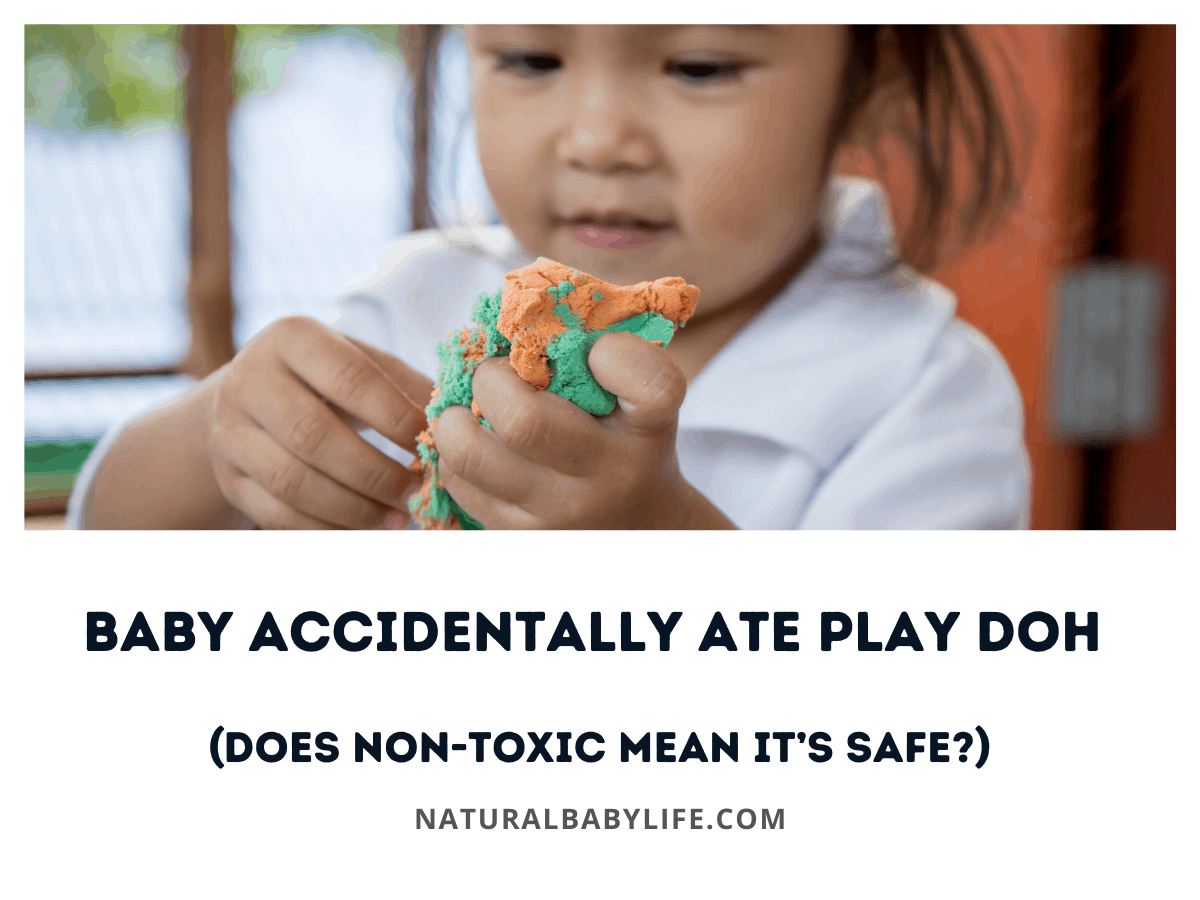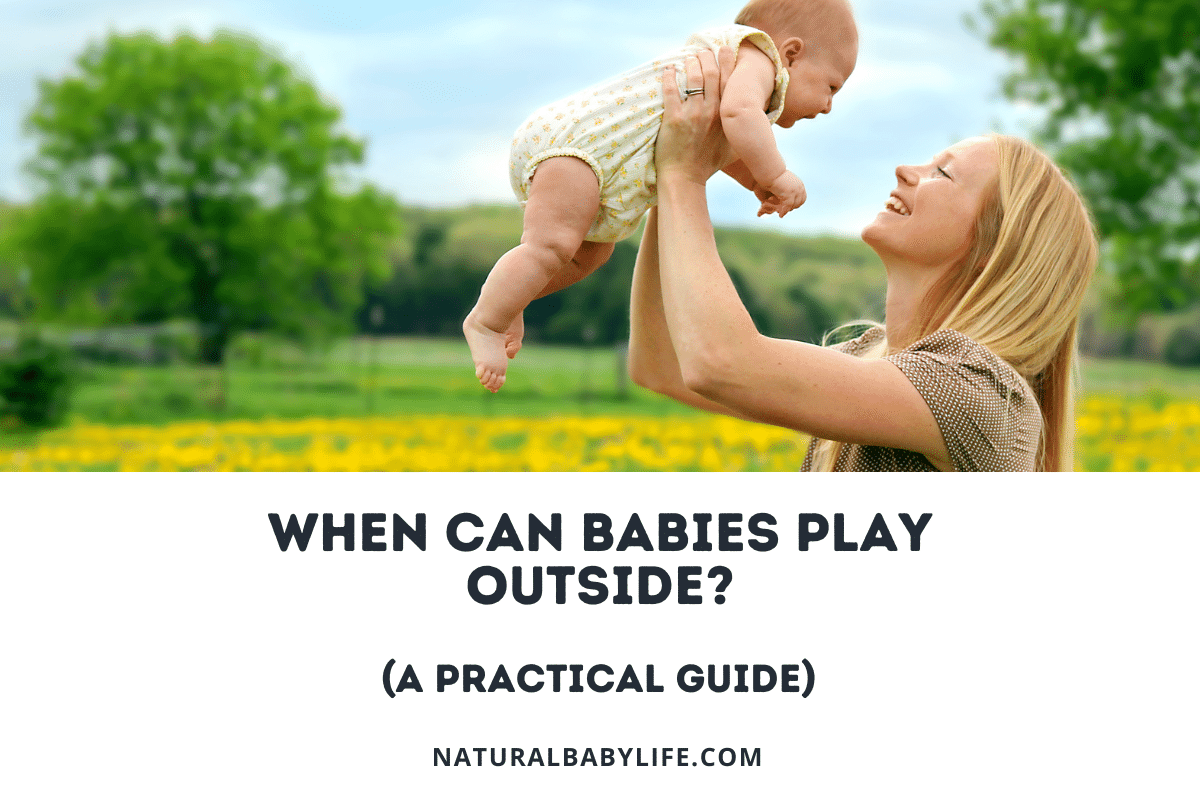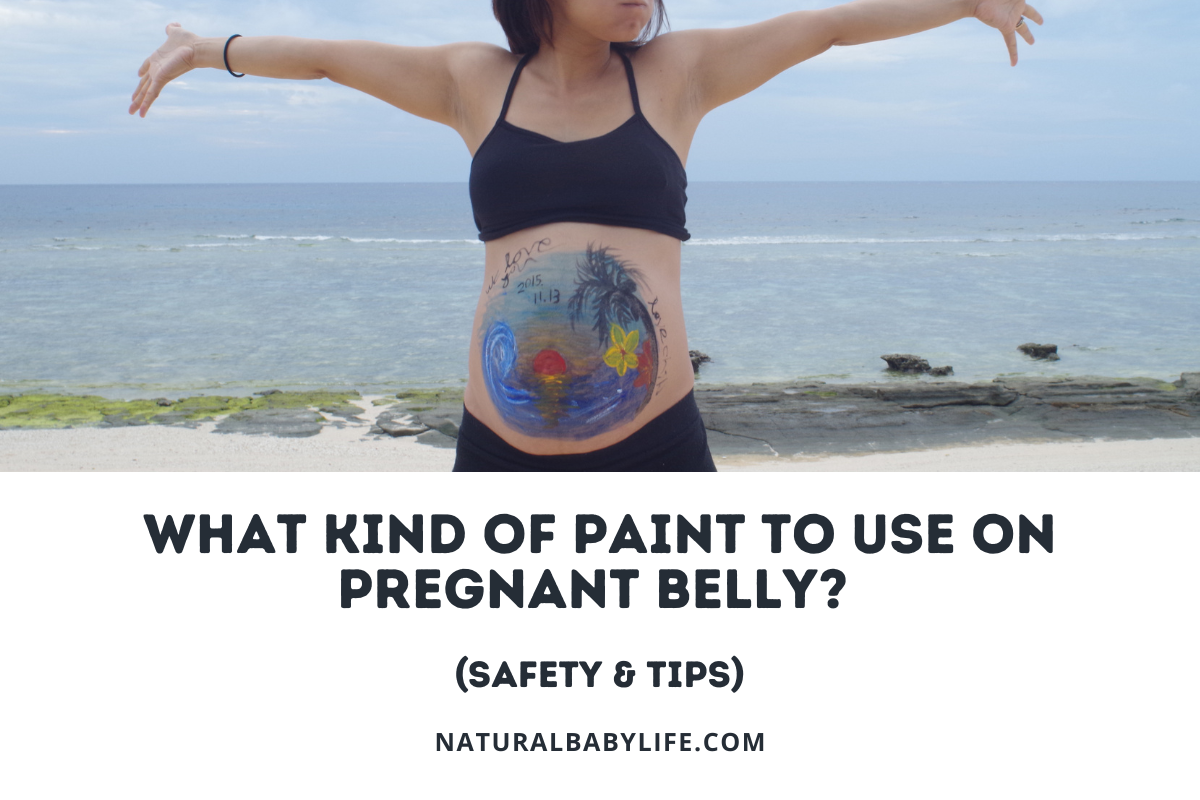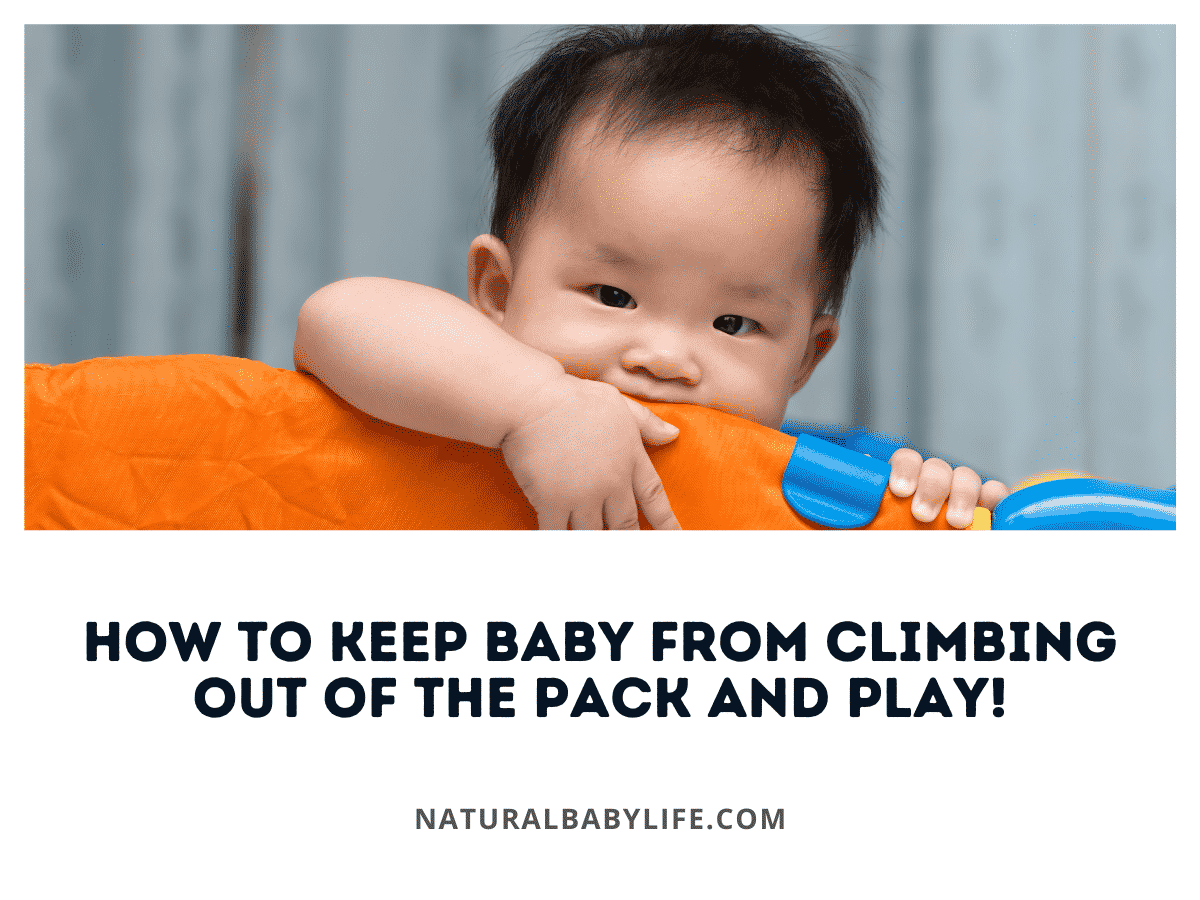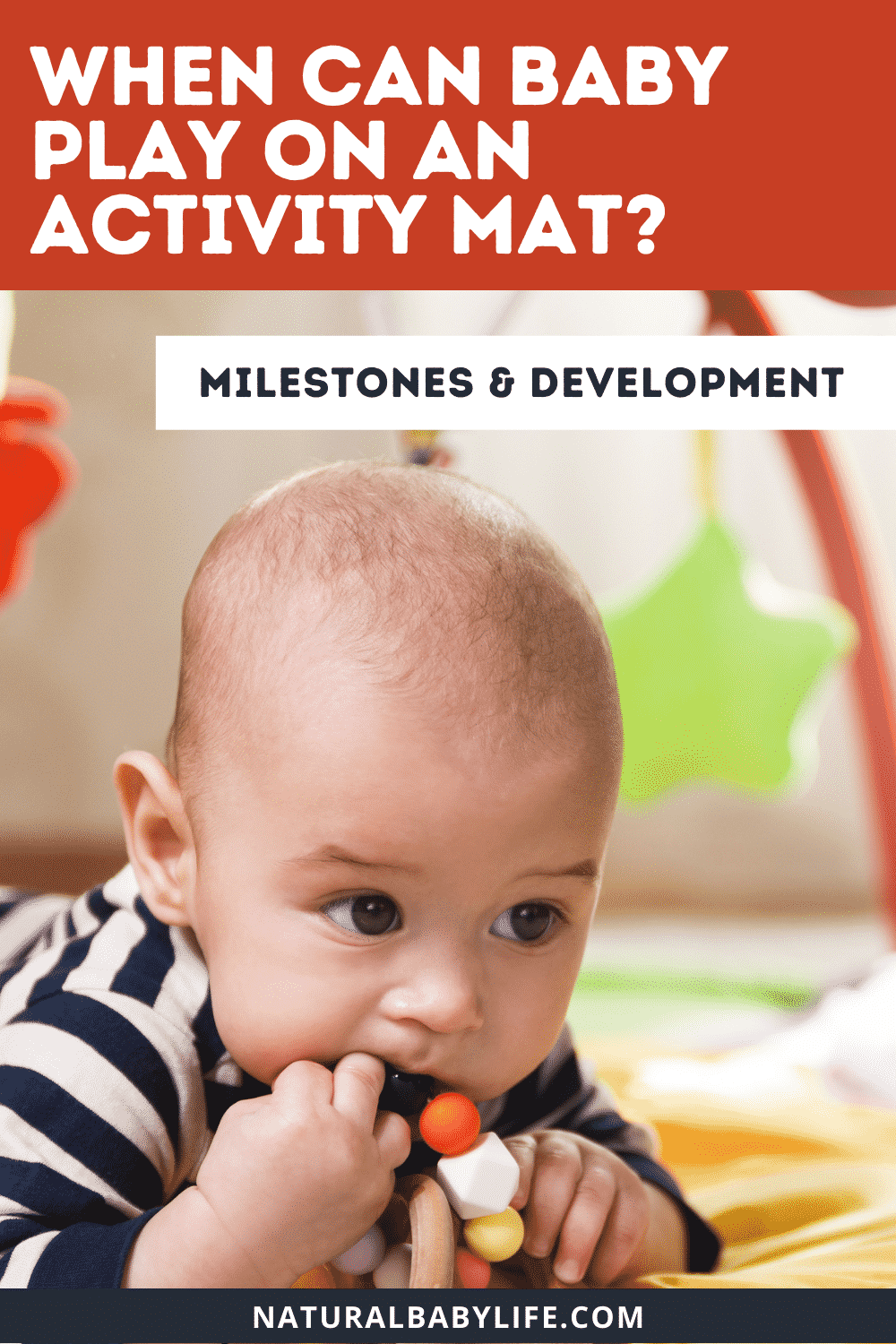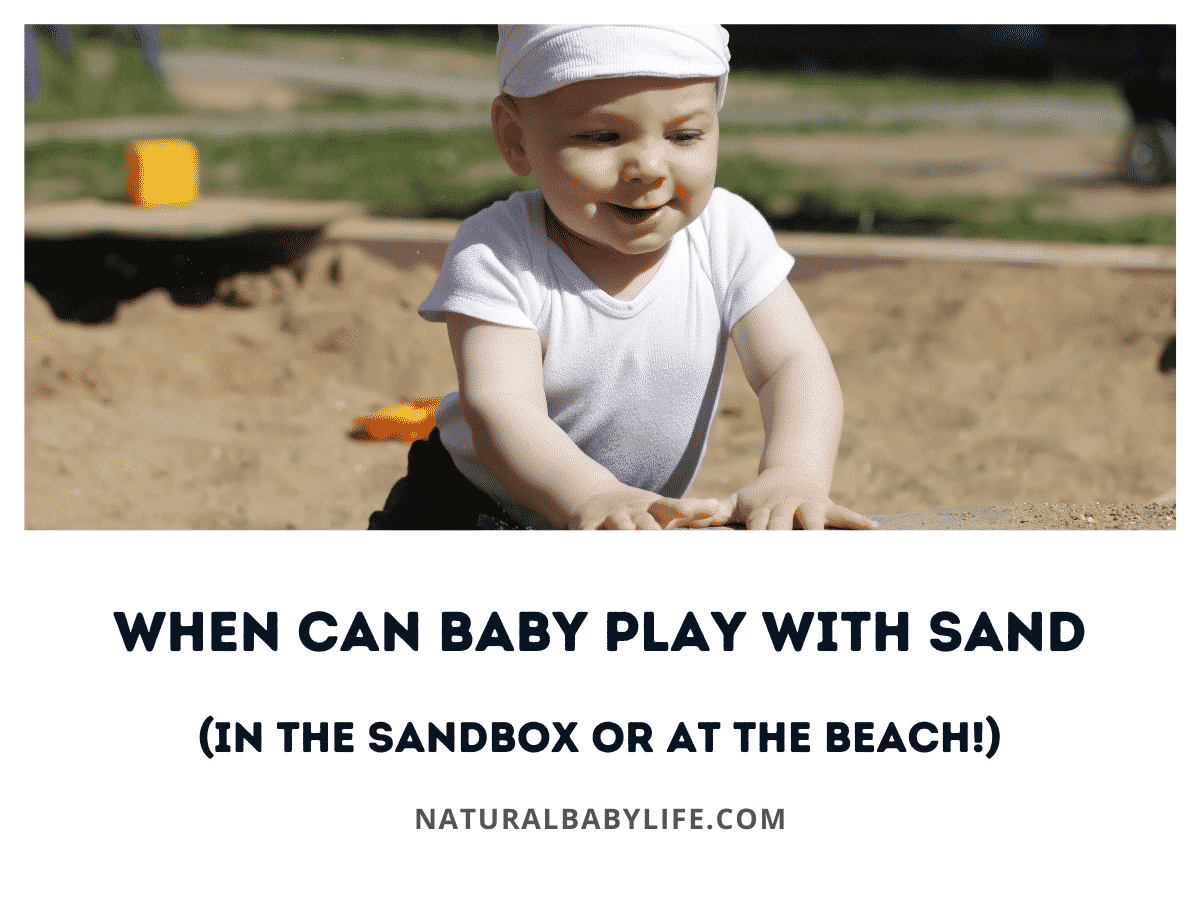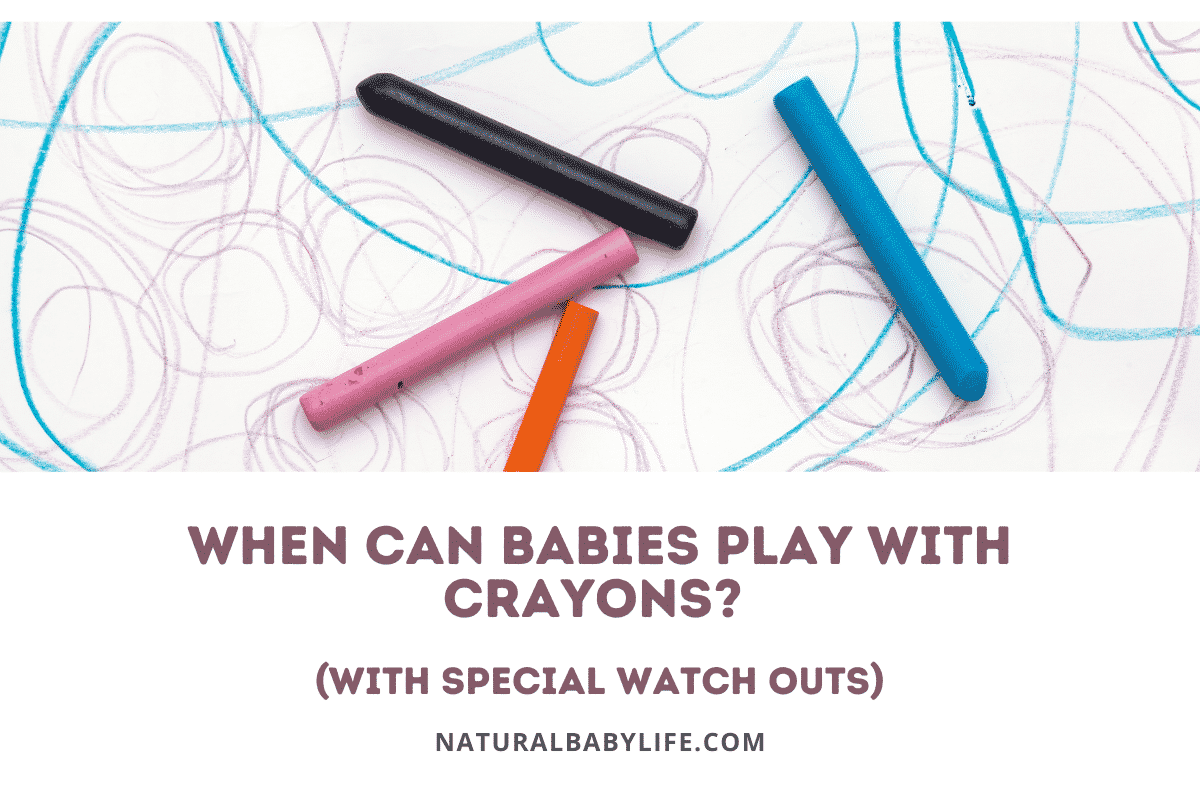The manufacturers of Play-Doh know it is nearly impossible to keep anything, especially anything colorful and fun, out of babies’ mouths. This is why you do not have to panic when you realize that your baby accidentally ate Play-Doh, but supervision to prevent consumption is always the best practice.
If your baby accidentally ate play-doh give them some water and watch for signs of choking, vomiting, diarrhea, and constipation. Almost all commercial and homemade recipes of play dough, including Play-Doh and Roseart, are non-toxic and are not a poison risk but call your local poison control with any concerns.
Read on to find out what is actually in Play-Doh, what to watch out for if there is accidental consumption of Play-Doh, and to explore whether homemade playdough is safer than store-bought.
Table of Contents
What happens if a baby accidentally eats Play-Doh?
Babies have a way of finding the tiniest specks of debris on the floor and eating them, so it probably will not be a surprise to you the first time you find your baby has ingested Play-Doh.
Commercially available play doughs, including the brand names Play-Doh and Roseart, are advertised as non-toxic, but what does that mean?
According to the FTC, the non-toxic label is applied to products that are not meant to be eaten but are not poisonous if they are accidentally swallowed. A toxic product is one that can produce personal injury or illness when inhaled, swallowed, or absorbed. Products may only be marketed as non-toxic if they have reliable scientific evidence that an item is non-toxic.
If your baby or child eats Play-Doh, immediately take it away and offer water. Then, monitor for symptoms. If either the quantity consumed or the resulting symptoms have you worried, call your state’s poison control line, consult a doctor, or call 9-1-1 if you are are in an emergency situation.
Many babies will eat Play-Doh and be just fine, but here are some things to keep an eye on:
- Choking is the primary safety concern and can happen to babies and toddlers who eat Play-Doh.
- High sodium intake will be the most dangerous latent result to watch for. Play doughs, even commercial ones, have a high sodium content. If too much dough is consumed, children can display symptoms of headaches, vomiting, and irritability. If that happens, get medical assistance immediately.
- Vomiting is likely if more than just a little is swallowed. Play-Doh is not digestible, so children can throw up to remove it from their bodies. This in itself is not a problem, but if the vomiting is ongoing or accompanied by lethargy, seek medical attention.
- Constipation may occur if vomiting doesn’t. Treat with your usual remedies like prunes or juice, and if the problem is ongoing, check in with your doctor.
- Diarrhea is another unfortunate possible side effect. Watch for dehydration and monitor to ensure that it lessens rather than increases.
Do I need to call Poison Control?
You do not have to call poison control unless your baby starts displaying persistent symptoms such as vomiting large amounts without signs of improvement or it seems like she ate a large amount.
When in doubt, always give them a call. They can talk to you about the specific product and quantity consumed.
Poison control lines are an excellent first step in non-emergent situations because they can provide free, confidential answers to your questions, but they are not a substitute for calling 9-1-1 if your baby is vomiting, seizing, or having difficulty breathing or swallowing.
Is Play-Doh dangerous for babies?
Play-Doh and any other product not marketed as a food or that is not developmentally appropriate, has the potential to be dangerous for babies.
The primary danger of your baby accidentally eating Play-Doh is choking.
If your little one consumes the Play-Doh without any choking issues, make sure you monitor her for any of the potentially negative reactions mentioned above, including headaches, vomiting, and constipation or diarrhea.
Play-Doh ingredients
We only have limited knowledge of the ingredients that comprise Play-Doh and other commercially available play doughs because they are proprietary.
Play-Doh markets its products as being made primarily of water, salt, and flour. We do know that Play-Doh does not contain peanuts, peanut oil, milk, or milk byproducts so allergic reactions are unlikely.
If your child has a specific sensitivity or allergy to a possible ingredient, reach out to Play-Doh customer care for more information.
Is Play-Doh toxic or poison for baby?
The United States requires that arts and crafts products be evaluated by a toxicologist pursuant to the Labeling of Hazardous Materials Act (LHAMA). Play-Doh states that its products are non-toxic under LHAMA standards.
Additionally, the Illinois Poison Center identifies Play-Doh as non-to-minimally toxic.
Remember, although Play-Doh is not toxic, that is not the same as being food-grade or intended for consumption.
Adult supervision of this product is needed.
Other safety concerns if your child eats play dough
As a parent, your first reaction when your kid takes a bite of Play-Doh is to worry that the brightly colored substance will harm your child, but truth is that toxicity is the least of your worries. Whether your toddler eats play-doh or your baby eats play-doh these hazards will be the same.
The same ingredients that make Play-Doh a safe toy for a little one can also make it dangerous if she eats too much of it. The amount of salt in Play-Doh can potentially be dangerous, although your child will need to consume quite a lot of it. Additionally, Play-Doh can pose a choking hazard if a child tries to eat a larger piece.
Choking hazard
Choking is the number one safety concern with Play-Doh.
Play-Doh is only recommended for children 2 years and older, but a two-year-old can certainly pack it into a little ball that will get caught in the throat if swallowed.
Know how to do the Heimlich Maneuver for all of your children or any children you supervise.
Salt content
High sodium intake is the second greatest concern about Play-Doh consumption.
Commercial play doughs have less salt than homemade ones, but a 22-lb child who eats 1 gram of salt can suffer from sodium intoxication. A child would have to quite a lot of Play-Doh to reach that amount.
Symptoms include thirst, lethargy, headaches, vomiting, and irritability. If your child starts to display these symptoms after consuming Play-Doh, get medical assistance immediately as it can be deadly.
Is homemade play dough safer for babies?
Parents afraid of the unknown ingredients in Play-Doh may turn to Pinterest and recipes for homemade dough.
While homemade play dough has benefits, there are still safety concerns to keep in mind as they often have much higher levels of salt and can be very dangerous if eaten.
it is also more likely that homemade playdough could produce an allergic reaction. Some of the ingredients in popular homemade recipes introduce common allergens, such as corn or wheat products. Dyes are another common allergen.
Homemade playdough ingredients
The best recipes for most families will be the simplest: combinations of oil, water, salt, flour, cream of tartar, and coloring.
This recipe for Best Homemade Play Dough is a quick recipe that you can whip up with basic pantry staples:
- 2 cups all-purpose flour
- 3/4 cup salt
- 4 teaspoons cream of tartar
- 2 cups lukewarm water
- 2 Tablespoons vegetable oil (coconut oil works too)
Is homemade playdough toxic?
Homemade playdough will be much like commercially available Play-Doh – non-toxic but also not intended for consumption.
If you want a play dough that your baby can safely eat without worrying about sodium intake or other tummy woes, look for edible play-dough. Play dough recipes like this one from Mama.Papa.Bubba is perfect for a baby who will be sure to put playdough in her mouth the second you look away.
Other safety concerns
The advantage of store-bought play doughs is that they are rigorously tested by government and consumer groups.
Some online recipes suggest adding fragrances or colors that are not safe for consumption.
For example, recipes often suggest adding food glitter. While technically edible, it should be consumed only sparingly and not frequently.
Allergies
When parents make playdough at home, we can unknowingly add in ingredients that are allergens, but it also gives us the opportunity to make a customized product for a child with allergies or sensitivities.
For this reason, the American Academy of Allergy, Asthma, and Immunology created a list of allergy-free playdough recipes.
One of that list’s best recommendations is a recipe that substitutes rice flour for wheat flour for children with wheat allergies. It also provides options to substitute for corn and dairy, depending on your child’s needs.
Salt content
Homemade dough recipes often have more salt, often several times more than commercial play doughs.
Only a few teaspoons of some homemade doughs will exceed safe levels and put your child at risk of high sodium intake.
Luckily, doughs with that much salt will be very unpalatable, and most children will be deterred. Alternatively, you can use a no-salt recipe.
Choking hazard
Homemade playdough retains the greatest risk of store-bought doughs: choking.
The consistency and the ability to compress into a ball or snake shape make doughs a choking risk. Supervision is required for babies and little kids.
In particular, homemade doughs that have added fragrance to make it smell yummier will be a lure for your little one.
Is there another alternative if I don’t want to make my own?
For parents not thrilled about Play-Doh but not interested in making homemade play dough, there are a few good options out there.
One is Eco-Dough, which is dyed with fruits and vegetables.
The Dough Parlour also carries play doughs that are food-grade but not edible.

